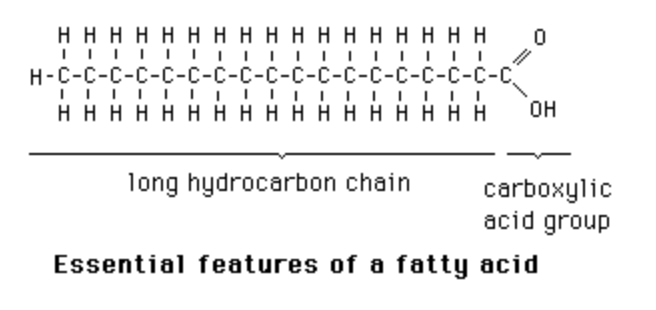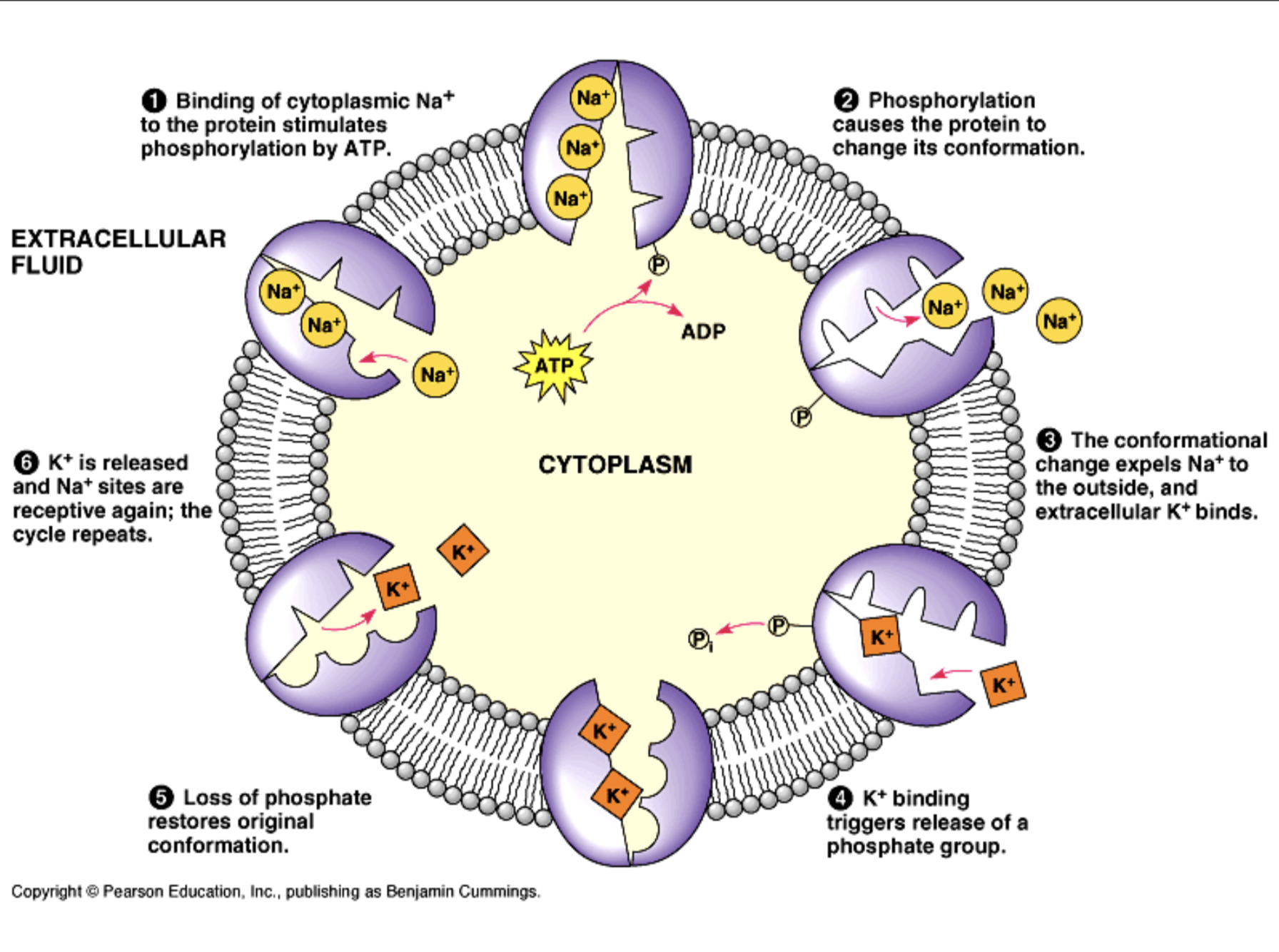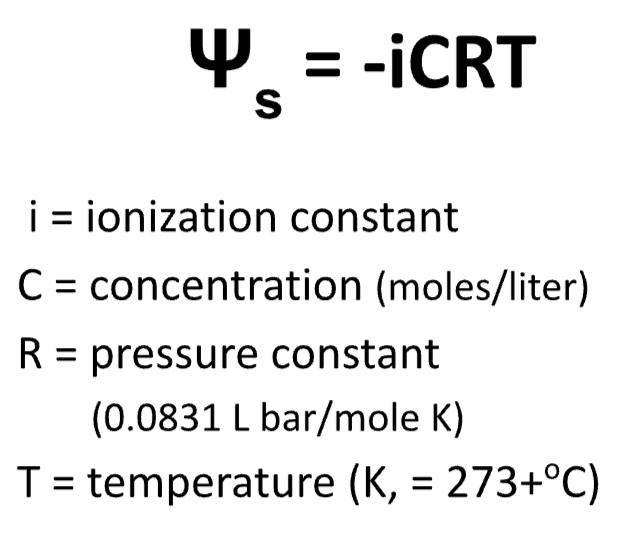AP Bio: Biochemistry (unit 1)
WATER
Water is polar: electrons spend more time around the oxygen than the hydrogen. this polarity leads to hydrogen bonding, a form of dipole-dipole bonding. water can form hydrogen bonds with other polar molecules.
Properties of Water
polarity:
good solvent for other polar compounds
immiscible with nonpolar compounds→ formation of cell membranes
hydrogen bonding
high boiling point
high specific heat
low density of ice
gas (vapor): least dense
liquid (water): most dense
solid (ice): moderate density→is beneficial to life because ice floats on water, which allows aquatic life to survive when lakes/bodies of water freeze over
adhesion, cohesion, surface tension
other:
neutral pH
MACROMOLECULES
CARBOHYDRATES
monomer: monosaccharide (simple sugar)

broken down to release energy during cellular respiration
glucose, sucrose, malatose
polymer: disaccharides and polysaccharides

storage and structural compounds
disaccharides: sucrose, maltose, lactose
polysaccharides: can be thousands of monomers long
starch: stored in plants; can be digested
cellulose: stored in plants; cannot be digested (is fiber)
glycogen: storage in humans; in liver (sugar stores→ why we carbo-load)
chitin: animal polysaccharide; in the exoskeleton of anthropods (used as surgical thread)
bond: glycosidic linkage
chemical composition: CHO→ (CH2O)n
LIPIDS
monomer: fatty acid

polymer: a combo of multiple fatty acids and glycerol units

triglyceride: 3 fatty acids + glycerol (fat)
saturated fats ( >—— )
condensed, with layers of fat like a crepe cake
bitter; very saturated
unsaturated fats ( >——-\ )
not condensed, like wet papers dried with a hairdryer and then stacked on top of each other
oils; not dense
phospholipid
head (hydrophilic)
VERY POLAR
tails (hydrophobic)
fatty acid tails
NOT POLAR
aggregate spontaneously in water
form bilayers/micelles with nonpolar tails inside
steroids
lipids with 4 fused rings
cholesterol
helps membranes stay fluid- is a regulator in different temperatures
estrogen
testosterone
other hormones
bond: covalent-ester linkage
chemical composition: CHO
PROTEINS
monomer: amino acid (peptide)
polymer: polypeptide chains
bond: peptide bond (covalent)
chemical composition: CHON, and
carboxyl group
amino acid group
R side chain
there are 20 amino acid side groups necessary for life!
nonpolar, aliphatic
polar, uncharged
polar, charged
positively charged
negatively charged
structures:
primary structure:
chain of amino acids
automatically becomes like this after coming out of the rough ER
held together by peptide bonds (r-side group attractions)
secondary structure:
amino acid chains folded onto itself
alpha helix
beta-sheets
held together by hydrogen bonds
tertiary structures:
3D structure
held together by disulfide, ionic, hydrogen, van der waals, LDF bonds
quarternary structures:
not all structures get to this stage
assembly of multiple tertiary subunits
held together by COVALENT, disulfide, hydrogen, van der waals, LDF
no ionic bonds in this stage?
denaturing
losing 3D shapes/unravelling because of:
pH
temperature
saltinity levels
sometimes denaturing is reversible…most of the times not.
think of eggs cooking and trying to reverse that process..
STRUCTURE=FUNCTION
if a protein denatures, it loses its function.
NUCLEIC ACIDS
monomer: nucleotide
polymer: DNA and RNA chains?
chemical compositions: sugar, nitrogenous base, phosphate group (ACTG)
MEMBRANE STRUCTURE & FUNCTION
membrane characteristics:
semipermeable
lets pass:
hydrophobic molecules
small uncharged polar molecules
doesn’t let pass: (these need a channel to pass)
large uncharged polar molecules
ions (charged molecules)
phosphoipids in a fluid mosaic bilayer
hydrophobic interactions
lateral movement
fluidity decreases as temperature decreases
membrane components
integral proteins
transmembrane (pass all the way through)
acts as a channel
channel proteins
selective
used in facilitated diffusion
embedded (passes halfway through the membrane)
acts as an anchor
glycoproteins
identifies proteins for cell to cell recognition
receptors
recieves chemical signals
cholesterol:
keps membranes fluid
decreases fluidity at high temperatures
prevents solidification at low temperatures
“a regulator”
peripheral proteins
bound to the surface of the membrane; often to integral proteins
usually inside the cell
relays signals
acts as attachment points
phospholipids
containment
transports O2, CO2, H2O, glucose, ions
STANDARD ERROR OF MEAN

large standard deviation= large standard error
large sample size = decreases standard error
sample size: # of trials/ # of data points collected
CELL COMPONENTS
cell wall: only plants have this. provide structural support, shape, protection. location: outside cell membrane.
cell membrane: all cells have this. a barrier between outside and inside the cell. semipermeable, and is a fluid mosaic. maintains the inner cell environment. surrounds cytoplasm.
centriole/centrosome: aids in cell division. organizes microtubules (the cell’s skeletal system). within cytoplasm.
chloroplast: only plants have this. take sunlight and convert it into glucose. in the cytoplasm—mesophyll cells.
rough ER: in the cytoplasm, near the nucleus (but is throughout the cell). makes proteins, is the location where they come out and perform post-translation modification folding and sorting. has ribosomes attached to its interior.
smooth ER: in the cell periphery; in cytoplasm. makes lipids (phospholipids, steroids), metabolizes carbs, detoxifies harmful stuff, and stores calcium ions (crucial in muscle contraction).
flagella: little tails at the outside of the cell membrane. provide mobility and act as propellors. only some cells have this.
golgi apparatus: “factory”→ receives proteins and lipid, then processes them, packages them, and transports/directs them to the right location. near the nucleus and rough ER.
lysosome: waste disposal. has digestive enzymes. helps with apoptosis
mitochondria: powerhouse of the cell. produces energy from glucose (ATP). located in the cytoplasm
nuclear envelope (membrane): surrounds the nucleus and protects DNA (separates the nucleus from the cytoplasm.
nuclear pore (NPC): holes in the nuclear envelope that allow small molecules and ions to pass in and out of the nuclear membrane.
nucleolus: produces and assembles ribosomes. located inside the nucleus.
peroxisome: detoxes cells→ oxidation reactions break down toxins.
plasmodesmata: helps in movement of molecules between cells (micro channels). located in the cell wall—only in plants.
ribosome: makes proteins. translates codes from mRNA into amino acid sequences. located in the cytoplasm or in the rough ER.
central vacuole: only in plant cells. is very large, and maintains turgor pressure for the cell. holds onto materials and waste. located at the center of the cell and is the largest organelle.
food vacuole: ingest and digest food particles; phagocytosis. helps provide nutrients to the cell.
vesicle: transports molecules around the cell. secretes substances, digest materials, and regulate pressure. located mainly near the ER and golgi apparatus to transport proteins.
protein production process:
ribosomes
initiate process
translates mRNA into amino acid sequences
rough ER
as the proteins are synthesized, they’re threaded into the “ER lumen” where further modifications are made.
vesicle transport
protein is complete→vesicle departs from ER, surrounding the protein
moves to golgi apparatus
golgi apparatus
processes and packages the protein
modifies by adding sugars or phosphate groups (glycosylation)
final function is determined here
vesicle action again!
based on the modifications made by the golgi apparatus, proteins are sorted and packaged into new vesicles and transported to their final destination
SURFACE AREA/VOLUME
viruses:
are not alive.
because they can’t reproduce by themselves!
have an envelope, protein coat, nucleic acid (DNA or RNA) and spikes (to attach to specific cell surfaces)
surface area: r2
large SA: more materials can enter/exit the cell per unit of time
volume: r3
cell volume determines its energy needs and waste production
SA/V RATIO
if a cell grows too large, it can’t continue to grow, because:
diffusion can’t support the necessary exchange of materials
nutrients can’t come in fast enough
waste can’t be sent out fast enough
diffusion is a passive, constant force. the rates of exchange are always the same: its the ratio of sa/v that matters
the smaller the ratio, the faster the rate of exchange
MEMBRANE TRANSPORT
PASSIVE TRANSPORT
requires no energy (spontaneous)
molecules move down a concentration gradient (high→low)
decreases free energy (entropy increases)
diffusion: the tendency for molecules to spread out into available space due to their thermal energy.
each substance diffuses down its own concentration gradient.
is unaffected by other molecules in the system!
molecules move down the concentration gradient until they’re evenly dispersed
osmosis: the diffusion of water down its concentration gradient across a semipermeable membrane
moves from high water concentration to low water concentration
or, low solute areas to high solute areas
TYPES OF SOLUTIONS
these are relative terms. (here, it’s the solution in relation to the cell)
isotonic solution:
equal concentration of solute particles inside and outside the cell
net movement of water is zero
cell stays the same size
hypertonic solution:
more solute particles in the solution than in the cell
hyper = more
water moves from the hypotonic cell into the hypertonic solution
water moves from low solute→high solute
cell shrivels
hypotonic solution:
less solute particles in the solution than in the cell
hypo = less
water moves from the hypotonic solution into the hypertonic cell
cell expands
osmoregulation: cells must maintain balance in different aquatic environments
especially for animal cells, who have no cell walls
FACILITATED DIFFUSION
passive (no energy used)
high concentration of molecules→low areas of concentration
literally is diffusion with a channel
requires a specific channel (which are often gated)
used for polar molecules and ions
ACTIVE TRANSPORT
requires ATP
pumps molecules against their concentration gradient
from low concentration → high concentration
uses proteins and channels
EXAMPLES
sodium-potassium pump

above:
pump out 3 sodium ions and pump in 2 potassium ions
uses 1 ATP
establishes and maintains an electrochemical gradient with sodium outside and potassium inside
this is important because nerves need this electrochemical gradient to function
cell’s inside is negatively charged compared to outside
this is membrane potential
proton pumps
maintain a hydrogen ion gradient (hydrogen ion is outside the cell)
concentration of protons can be used for cellular work
uses ATP
cotransport
uses ATP to pump a molecules out of the cell
molecules need to do work as it passively diffuses back in
examples:
sucrose cotransporter
plant cells pump out hydrogen ions, which diffuse back in and bring a sucrose along with it!
plants use this mechanism to load sucrose into special cells
lipid cotransporter
lipid molecules are pumped out of the cell, and bring in other molecules with it
they passively diffuse back in
chloroplasts and mitochondria
function as “cotransporters” between themselves by exchanging ATP and NAD(P)H
think of just them collaborating to make energy for the cell!
CALCULATING WATER POTENTIAL (PSI)
water potential (Ѱw): the tendency of water to move out of a solution because of the combined forces of solute potential and pressure potential
high water concentration = high water potential
solute potential (Ѱs): the tendency of water to move (by osmosis) in response to differences in solute concentration
as molarity increases, Ѱs decreases (due to negative in equation)
high solute potential → likely that water will leave
(high water concentration)
low solute potential → likely that water will come
(low water concentration)
pressure potential (Ѱp): a component of Ѱw that comes from the physical pressure exerted on water within a cell
Ѱp = 0 in open containers
Ѱw = 0 if pure water is in an open container
Ѱp = 0 because of the open container
Ѱw = 0 because its pure water (no molarity)
CALCULATING SOLUTE POTENTIAL (Ѱs) EQUATION

the greater the concentration, the more negative the product
higher solute potential = a number that’s closer to zero
CALCULATING WATER POTENTIAL (Ѱw) EQUATION

TRANSPORT PROCESSES IN CELLS
all membranes are made of the same thing the receptor-mediated membranes are a tiny bit different…but they’re still recycled
cell membranes are recycled between the golgi, ER, vesicles, vacuoles, peroxisomes, and outer membrane
cell membranes are all the same, except for their embedded proteins
proteins are also recycled back to their correct membrane source
membranes have a “sidedness” that’s maintained during recycling
vehicles of transportation:
vacuoles: hold water, occasionally nutrients (pinocytosis)
peroxisomes: hold detoxifying enzymes (peroxicretion—fuse with the membrane and release their waste extracellularly)
lysosomes: hold digestive enzymes (release their waste extracellularly)
secretory vesicles: excrete things from the cell
EXOCYTOSIS:
removal of materials from the cell
vesicles can bud from the golgi apparatus/ER, then fuse with the cell membrane and discharge their contents
peroxisomes
lysosomes
secretory vesicles
food vacuoles might merge with the outer cell membrane and dump debris outside the cell
ENDOCYTOSIS:
allows intake of large quantities
a small area of the membrane pinches in (like a divot, then becomes a hole with a small opening)
becomes a pocked, which seals into a vacuole
cells with cell walls cannot do this!!
phagocytosis: ingestion of large particles into a food vacuole
then merges with a lysosome
non-specific
EX: amoebas, macrophages (white blood cells: engulf viruses, anti-bacteria, and other foreign pathogens)
pinocytosis: taking in liquids
non-specific
receptor-mediated endocytosis
highly specific; targets things to take in
uses receptors that bind to specific substances
receptors are in concentrated regions
“coated pits”
substances bind to the receptor → cell membrane forms a pocket, then a vesicle, enclosing the substance → brings it to the cell
receptor proteins are recycled back to the coated pit area of the membrane